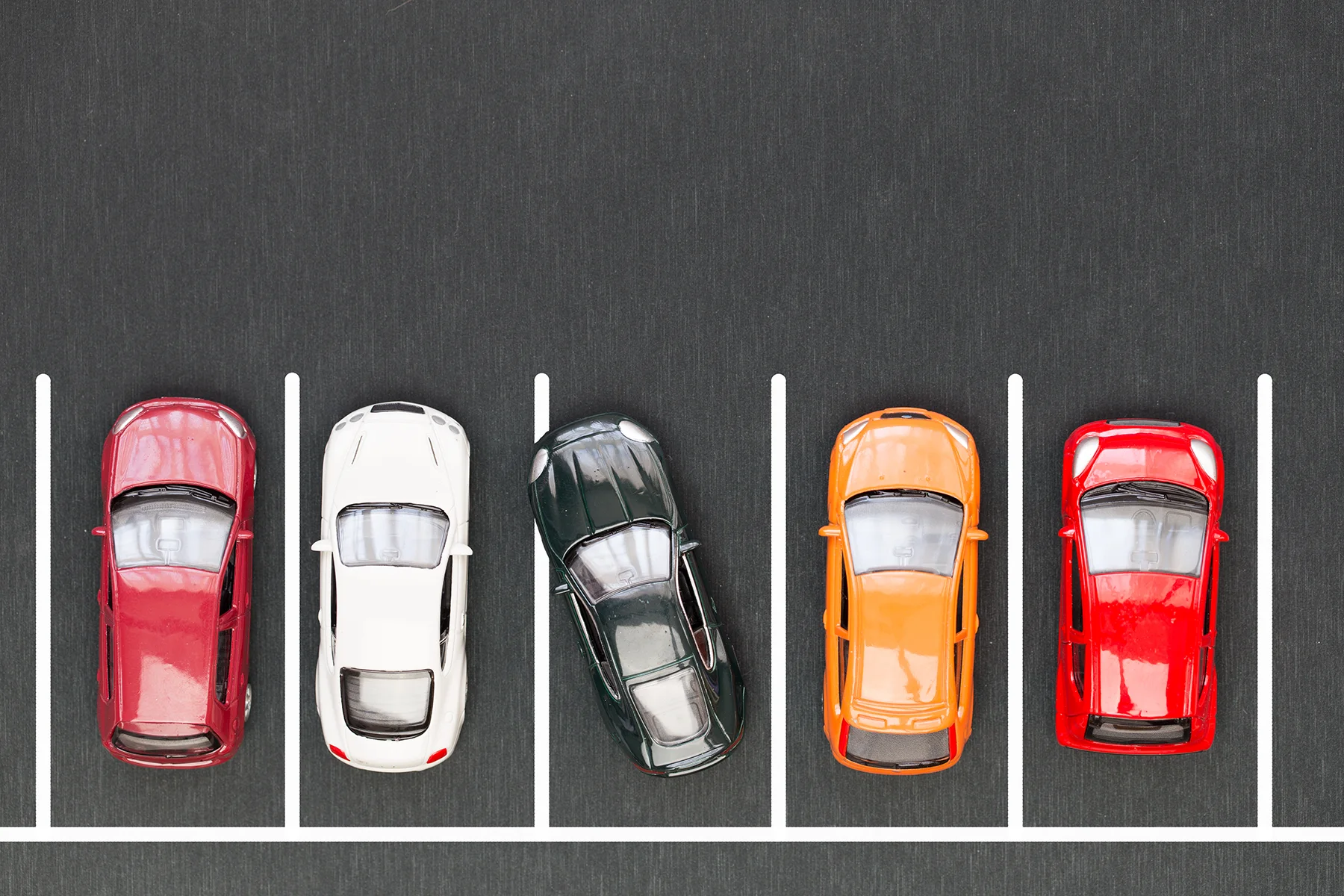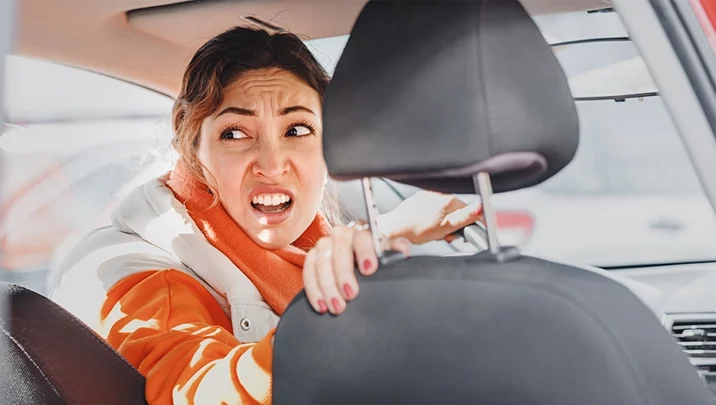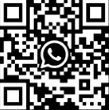
Mastering Parking for the ICBC Test: 100% Knowing
Enjoy this video about mastering parking for your ICBC driving test—it’s more than just fitting into a spot. It’s your chance to showcase control, patience, and your “100% KNOWING” of everything
around your car! There are 5 possible types of parks you may be asked to do. Also they can ask for a 3 point turn occassionally. You must know where all 4 corners of your car are at all times, plus remain aware of the 360 space around
you.
Jig Jog Parking
Parking might seem like the sidekick of driving skills, but it’s one of the starring roles on your ICBC road test. Why? Because parking isn’t just about putting your car between two lines; it’s a reflection of your overall driving control. If you can park well, you’re showing controls, awareness, and most importantly—your ability to keep your 360° safe intact. Also showing this skill is a essential piece of the test. Without a park you do not qualify for the test hence you fail.
Think of it this way: parking is where the test of your “100% KNOWING all around your car” really shines. Whether it’s parallel parking, backing into a stall, or squeezing into a tight space, your examiner is looking for calm, precise movements that prove you understand your car’s space and limits. This isn’t about perfection; it’s about showing that you can handle challenges without giving up or panicking. And jig jog jig jog is ok to do.
When practicing, focus on low-risk moves first. Build confidence in quiet areas before heading into busier zones. Parking isn’t a time to rush—it’s about making smart, deliberate decisions that keep you and those around you safe. Take your time, check your surroundings, and use your mirrors and windows to protect your BUBBLE. Specifcally, do not let any of the four corners of your car get too close.
By the time you step into that ICBC test, parking should feel like second nature. Remember, it’s not just about impressing the examiner—it’s about laying the foundation for everyday driving success. Nail your five possible parkings, and you’re already halfway to driving like a pro. Five possible parks are: parrallel, reverse to right into stall, reverse to left into stall, drive forward right into stall, and drive forward left into stall.
And remember, every time you drive the final objective ends with a PARK!

Parking Stop Stop Stop: The Hidden Hero of Your ICBC Driving Test
Get ready to dive into the essentials of parking on your ICBC driving test! It might not be the flashiest skill, but it’s a must-do for passing—and the perfect way to show off your control, awareness, and “100% KNOWING all around your car.” The most common word I use to help new drivers prepare for the test is, stop. Most driver;s want to zoom the car stright into the spot in one, like a 20 year experienced driver. But safe is far more important
than fast. Stop stop and stop to ensure all 4 corners of the car are exactly where you want them. This is no time to rush!
Reverse Parking
ICBC test parking has a time limit of 1 to 2 minutes maximum. You need to be good at this before you test day.
The above video is showing how one learns to park and the importance of stopping as many times as needed to figure out where all 4 corners of the car are. The fastest way to learn a cars four corners is to stop the car and GOAL Get Out And Look. This teaches you what the real space between you and the other ars is, as compared to what you can see from inside the car.
You know what often gets underestimated on the ICBC driving test? Parking. It’s not just about getting the car into the space—it’s about showing the examiner you’ve got control, patience, and the ability to keep your 360 aware intact, even in tight spots. Once you master parking it will boost your confidence which is am important element throughout the driving test.
Think about it. Parking combines so many driving skills into one action: awareness, judgment, and your ability to stay calm under pressure. When you’re parking, whether parallel or reverse, you’re proving you can maneuver your car with precision while keeping risk as low as possible and ensuring you don’t block anyone’s right of way. Which, in a parking lot, having other cars wait for you is ok as long as you properly notified everyone of your intentions, signals and keep vision clear around you.
Want to make parking easier? Start small. Practice in open spaces to understand how your car moves when you reverse or turn. Then add the challenge of parked cars, curbs, or lines. Focus on moving deliberately—there’s no prize for rushing. When learning to secure the car, getting out and looking is a super fast way to learn the distances but comparing what you think is the real space to the object – to the truth and real distance by getting out and looking. You are a learning new driver. Act like it. Get out and look is a super fast way to learn to park. Of course, do not do it on the test day.
Remember, parking is a skill, not a chore. It’s your chance to show you’re not just reacting to the road but proactively managing your space. On your test day, treat parking as your moment to shine. You’ve got this.

Reversing Secrets
Enjoy this video about how parking. Takes center stage in your ICBC road test — and why mastering is key to showing off your “ 100% KNOWING “ and demonstrating that reversing is very hard to see and evenharder to steer and control. Doing it repeatedly enough times to really understanding it is the only way to pass the driving test. Knowing how to park builds that important confidence for test day.
Reverse Secrets
#1 Driiving backways is not driving forward. This means that reversing a car uses near nothing you have learened from driving forwards. Reversing is a totally unique skill. Its as if you exited the car and climbed into a space ship. To control reversing your new spaceship, you must relearn from scratch.
When in R – reverse gear, the steering wheels are a the back of the machine now. The back window that you are looking out of is very small plus it is far away from where you are sitting plus a set of extra back seat chairs in your way and a back truck space making it really hard to see. Plus your chair is facing the wrong way because it is bolted to the floor of the car facing foward out the forward direction. And the steering wheel is now behind you as you tun around straining your neck to see out the back of the car.
Everything screams, wow, it sure is hard to see when reversing a car!
YES. And this is why you must go very slow, be willing to stop and get out to look how close you really are to objects with your limited inside view. Plus learn that the rear steering is delayed and not as responsive as going forward, and the front of the car when backing swings out oddly and agressively and can easily bang into something.
————————————–
Backing a car has nothing to do with driving forward. It’s a completely different skill set—one that requires you to hit the reset button and start fresh, like putting on baby shoes. Got it?
Yet too many instructors treat backing as if it’s just driving forward with a different view. They teach it through a series of rote steps: stare out the front windshield, build a checklist based on that parked car next to you, and follow a rigid formula. Sure, this might work if everything lines up perfectly—like the parked car being a predictable sedan and you remembering every single step. But what happens when the “parked car” is a 5-ton truck or you forget one of those steps? Spoiler alert: it all falls apart.
Now imagine this same method applied to driving forward. “Okay, to pull over to the curb, turn the wheel exactly 30 degrees, line up the bump on my hood with the curb, wait for two seconds, then turn the wheel 60 degrees to the left.” Huh? Are you kidding me? That’s how some instructors teach backing, and, believe it or not, it’s even how some teach forward driving—memorizing robotic steps instead of actually learning how to drive.
Why? Because it’s easier to have you mimic an experienced driver than to guide you in learning the feel of driving, the skill of steering, and the real control needed for the car to respond to you naturally. But the truth is, learning how to drive means learning how to think like a driver—not just repeat a set of instructions. That’s why the better approach is to teach you how to truly steer and control the car by looking and going backwards.
Learning to drive isn’t about copying someone else’s habits—it’s about building your own understanding from the ground up. And that starts with ditching the formulas and actually learning how a car moves, responds, and becomes an extension of you.



